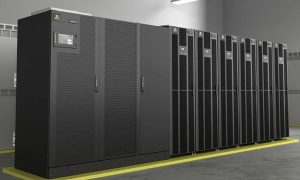AI, the Internet of Things and 3D printing, among others, shape the future of manufacturing by lowering production costs, improving the speed of operations and minimising errors.
Technological advancements and innovations have always driven the manufacturing industry. From big data analytics to advanced robotics, the revolutionary advantages of mode technologies are helping manufacturers reduce human intervention, improve plant productivity and gain a competitive advantage.
Sophisticated technologies such as AI, the Internet of Things and 3D printing, among others, shape the future of manufacturing by lowering production costs, improving the speed of operations and minimising errors. Productivity is critical to the success of a manufacturing plant; individual manufacturers are expected to make significant investments in these technologies.
Here are five technological interventions that are driving growth in the manufacturing industry
Industry 4.0: The internet of things (IoT) is rapidly being implemented in the industrial and manufacturing domain, allowing plant owners to increase productivity and decrease complexity. In 2020, the number of Internet-connected devices will reach 25 billion. IIoT is an amalgamation of various technologies, such as machine learning, big data, sensor data, cloud integration, and machine automation. The technologies are used in predictive and proactive maintenance, real-time monitoring, resource optimisation, supply chain visibility, cross-facility operations analyses, and safety, enabling plant managers to minimise downtime and enhance process efficiency. A plant needs to operate smoothly to perform regular maintenance and repairs. However, not all equipment and devices require the same amount of care. The IIoT enables plant managers to monitor equipment conditions and perform predictive maintenance. Their real-time performance monitoring allows them to plan maintenance around when necessary, reducing the likelihood of unplanned outages and productivity loss
Big Data Analytics: Big data analytics can provide many ways to improve asset performance, streamline manufacturing processes and facilitate product customisation. A recent Honeywell survey found that 68% of American manufacturers already invest in extensive data analysis. These manufacturers can inform decisions using productivity and waste efficiency data provided by comprehensive data analysis, reducing operations costs and increasing overall performance.
AI and machine learning: For decades, manufacturers have used robotics and mechanisation to increase productivity and reduce production costs per unit. Machine learning appears to be the next wave in fabrication. AI is helping production teams analyse data and use the insights to replace inventory, reduce operational costs and offer seamless quality control over the entire manufacturing process. The era of unintelligent robots engaged in cyclic production tasks has ended. AI and machine learning make it possible for robots and humans to Collaborate, creating agile manufacturing processes that learn, improve and make smart manufacturing decisions. As a result, manufacturers can use industrial robotics and intelligent automation to manage routine tasks and focus their time and resources on income-generating tasks such as research and development, expanding product lines and improving customer service.
3-D Printing: 3-D printing or additive layer manufacturing technology is expected to hugely impact high-end industries such as aerospace, mining, machines, automobiles, firearms, commercial and service machines, and other industrial equipment. This revolutionary technology allows manufacturers to build physical products from complex digital designs stored in 3D ComputerAided Design (CAD). Materials such as rubber, nylon, plastic, glass and metal can also be used to print natural objects. 3D bio-printing allowed to manufacture of living tissues and functioning organs for medical research. Unlike traditional manufacturing, 3-D printers can create complex shapes and designs at no additional cost, offering more. Moreover, the growing applications of 3D printing in manufacturing give rise to manufacturing as a service (Maas), enabling companies to Maintain a current infrastructure that meets the needs of multiple clients and eliminates the need to purchase new equipment.
Virtual reality (VR): simplifies the product design process by removing the need for complex prototypes. Designers and engineers use VR to create realistic product models, enabling them to see their designs digitally and solve potential problems before starting production. Customers can also review and interact with these digital designs, simulations, and integrated devices, significantly reducing their time to design. For example, automotive manufacturers are now using virtual reality to ensure that their cars are tested early in the vehicle development process, reducing the time and costs associated with changing designs, tolerances and safety features.
Cookie Consent
We use cookies to personalize your experience. By continuing to visit this website you agree to our Terms & Conditions, Privacy Policy and Cookie Policy.















